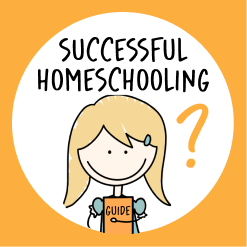There are many excellent curriculums, carefully designed to teach in a logical, meaningful way. As a home educator, the problem was rarely finding good material. Over the years, I used lots of excellent curriculum. However, it soon became evident that those curriculums were written for a very different setting than mine—a traditional school classroom.
Here is what a traditional classroom looks like:
- 150+ full days of school per year, starting at age 5 or 6
- 60+ minutes of math, writing, etc. per day, 5 days a week
- Often large classes with a group of children that are all born in the same school year
- A fulltime, paid teacher whose sole responsibility is to teach the class
Here is what home-centered learning looked like in our home:
- 360 days per year, starting from birth, with variable/minimal days looking like a traditional school
- Very short periods of uninterrupted time (in my case, I could rarely make it through a lesson without having to stop and change a diaper, check dinner, etc.)
- Multiple kids spanning a wide range of years (in my case, 6 kids spanning 10 years)
- A teacher/parent that is unpaid and has many other simultaneous responsibilities.
I had six children and it soon became apparent that recreating a traditional school setting was not going to happen. Furthermore, even if I could have recreated a classroom, it would not have taken advantage of the many benefits of teaching at home. We spent many years toggling between “unschooling”, which had many unique benefits, and the heavy-duty, college-prep study needed so my kids would be ready for college. We home-schooled through high school. All six kids graduated from a university (the majority with scholarships) and several went on to obtain advanced degrees. From an academic viewpoint, we all lived “happily ever after”, but it was a rough and frustrating road.
During those home-school years, it became evident that I needed a simple program that looked like this:
- Minimal teaching required by a parent and lots of student-directed learning activities.
- Allowed multiple ages to be taught at the same time so the family could have fun learning together.
- Not dependent on completing a full book each academic year.
- Instead of having grade levels, focused on ensuring each child mastered each concept, allowing them to move as quickly or slowly as needed.
- Allowed material to be presented in various orders and different ways to match the child’s interests and abilities.
- A “grab and go” program, requiring little or no preparation.
- Clearly identified all the concepts and skills needed to master each subject and an easy system for tracking progress (a progress chart for each child).
- Fun and engaging activities that made learning an integrated part of life, rather than drudgery; providing a balance between “play” and repetitive mastery.
Whatever curriculum you choose, be realistic about the constraints in your home. Find a curriculum that adequately addresses the limitations of a home environment, but also maximizes the advantages. One of the first steps to successful homeschooling is learning to be realistic about what will work and what will not in a family setting.
To assist in this endeavor, Simply Smart provides many resources for families. Simply Smart is what I wished I had when I was teaching my kids. It is designed to help parents teach in their unique home situation – whether homeschooling or supplementing public education. It helps parents shape their child’s perceptions about learning by creating a fun, stimulating home environment, that clearly presents concepts and makes it easy to ensure there are no gaps in your child’s education.
RELATED ARTICLES

Is there something you would like help or more information on? Submit your questions here.
Do you have a parent help article that you want Simply Smart to consider publishing? Share by clicking here.
- Date Added: February 8, 2024



